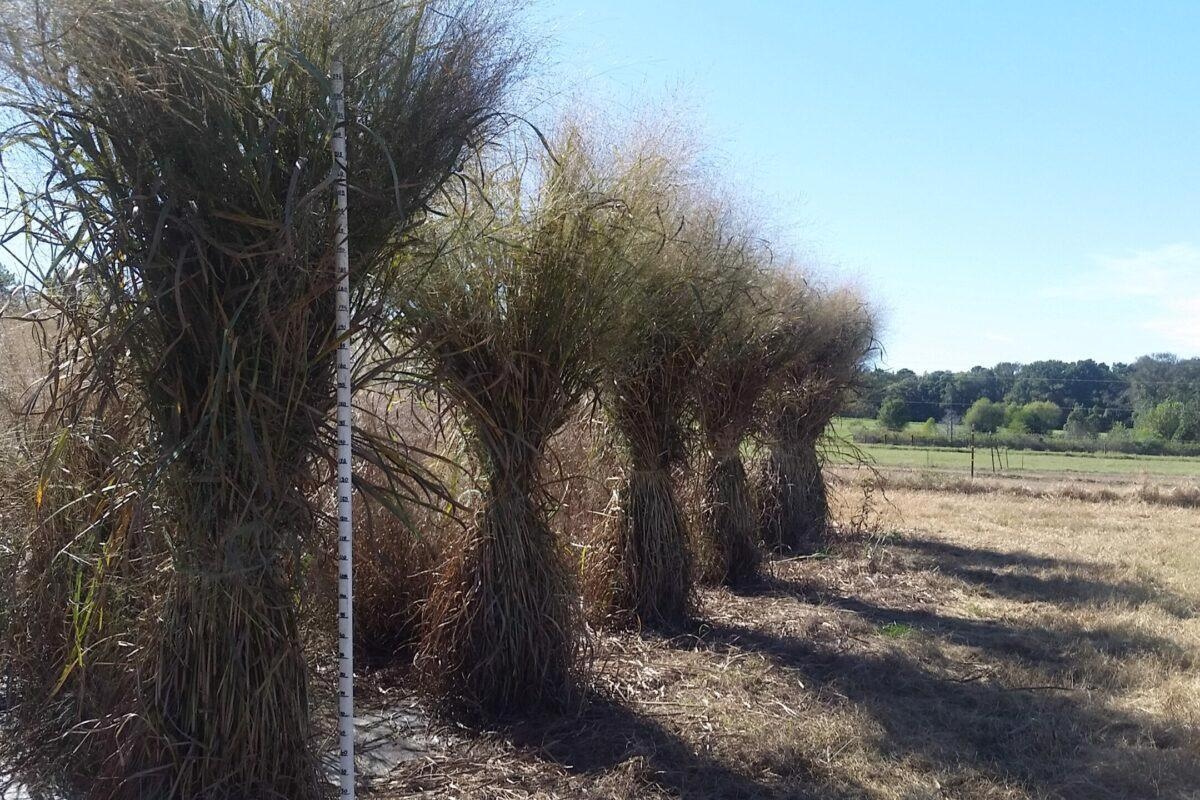Jan 28 2021
Biologists are confident that they are now closer to achieving a long-term aim of creating an inexpensive and extensively available plant as a source for fuel and energy.
 Lowland switchgrass ready for harvest. Overton, Texas. Image Credit: Jason Bonnette.
Lowland switchgrass ready for harvest. Overton, Texas. Image Credit: Jason Bonnette.
This signifies that one of the future big weapons in the combat against climate change could trace its roots to the side of a Texas highway.
Scientists at The University of Texas at Austin (UT Austin), HudsonAlpha Institute for Biotechnology, the U.S. Department of Energy (DOE) Joint Genome Institute (JGI), and other institutions have published a complex genome analysis of switchgrass, which is considered a potential biofuel crop.
The researchers linked various genes to improved performance in changing climates throughout North America, which currently provides researchers a road map for growing high-yielding switchgrass coupled to present and future climate conditions across the United States.
Improving switchgrass to grow efficiently in several diverse environments is the main element in guaranteeing its success as a biofuel feedstock.
The results of the study were published recently in the journal Nature.
This search for improved switchgrass started over 10 years ago in the UT Austin laboratory of Tom Juenger, a professor of integrative biology and the study’s corresponding author. While requesting samples from the switchgrass stocks at the U.S. Department of Agriculture, Juenger observed an absence of diversity. Therefore, Juenger and his then-postdoctoral researcher, David Lowry, jointly started to find their own samples.
Originally, a lot of these collections came from us driving around in a pickup truck with a shovel and digging up plants off the side of the road or in parks where we had permits.
David Lowry, Study Co-Author and Assistant Professor of Plant Biology, Michigan State University
Switchgrass is a sturdy perennial having deep roots and grows throughout the country from Canada to Mexico. It is a crucial component of the tallgrass prairie habitats of central North America. It has the ability to reach heights measuring 12 feet in certain regions and is utilized to regulate erosion, as a game cover, and as food for cattle at times.
However, it can be most significantly used as a source of biofuel, which is a critical component to reduce atmospheric carbon levels and fighting climate change. The study’s utmost aim is to develop high-yielding varieties of switchgrass that correspond to one or more of the several different climates and eco-regions of the United States.
Juenger, Lowry, and their collaborators from HudsonAlpha Institute for Biotechnology and the DOE Joint Genome Institute developed 10 similar gardens in eight states, cultivating clones of over 1,000 switchgrass samples that were gathered from the whole of North America.
The researchers ordered the genetic diversity of such samples and gathered a high-quality reference genome sequence to match the diversity. Furthermore, they recorded the varieties that flourished and in which regions, thereby matching sections of their genomes with particular traits that had evolved over several millennia to particular climates across the continent.
We ended up finding three very distinct populations of switchgrass from three regions of the United States, all of which had their own sets of adaptations to climate. It means there are potentially multiple evolutionary paths available to match switchgrass plants to particular climates.
Alice MacQueen, Study First Author and Research Associate, The University of Texas at Austin
Scientists from the University of California (UC), Berkeley; Rutgers University; USDA-ARS; Arizona Genomics Institute; University of Georgia, Athens; Clemson University; Marshall University; Jawaharlal Nehru University (India); Nobel Research Institute; University of Nebraska, Lincoln; South Dakota State University; University of Missouri; Argonne National Laboratory; USDA-NRCS; Texas A&M University; UC Davis; Oklahoma State University; University of Oklahoma; and Washington State University contributed to this study.
The study was financially supported by the DOE, the Great Lakes Bioenergy Research Center, the Center for Bioenergy Innovation, and the National Science Foundation.
Journal Reference:
Lovell, J. T., et al. (2021) Genomic mechanisms of climate adaptation in polyploid bioenergy switchgrass. Nature. doi.org/10.1038/s41586-020-03127-1.